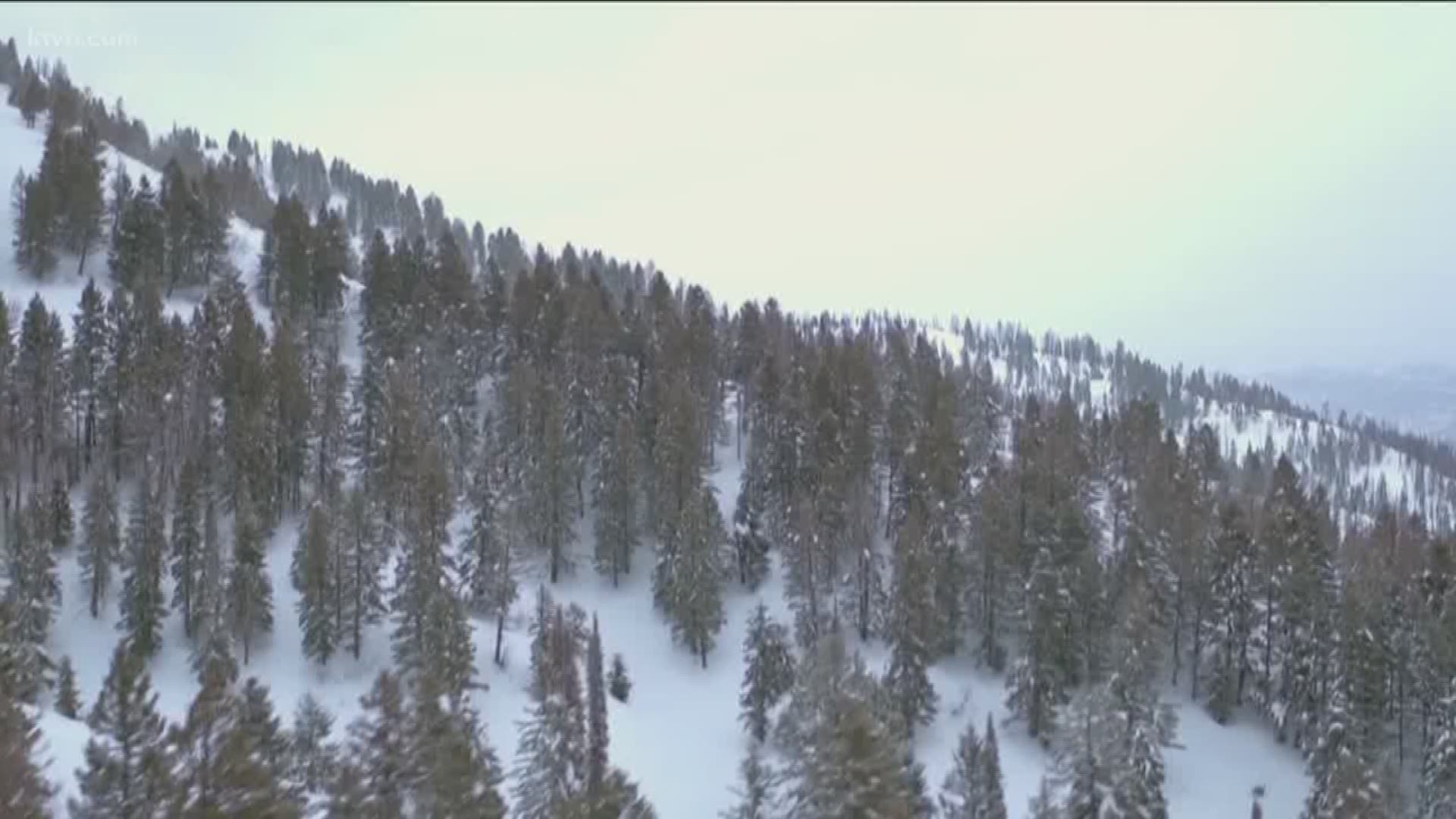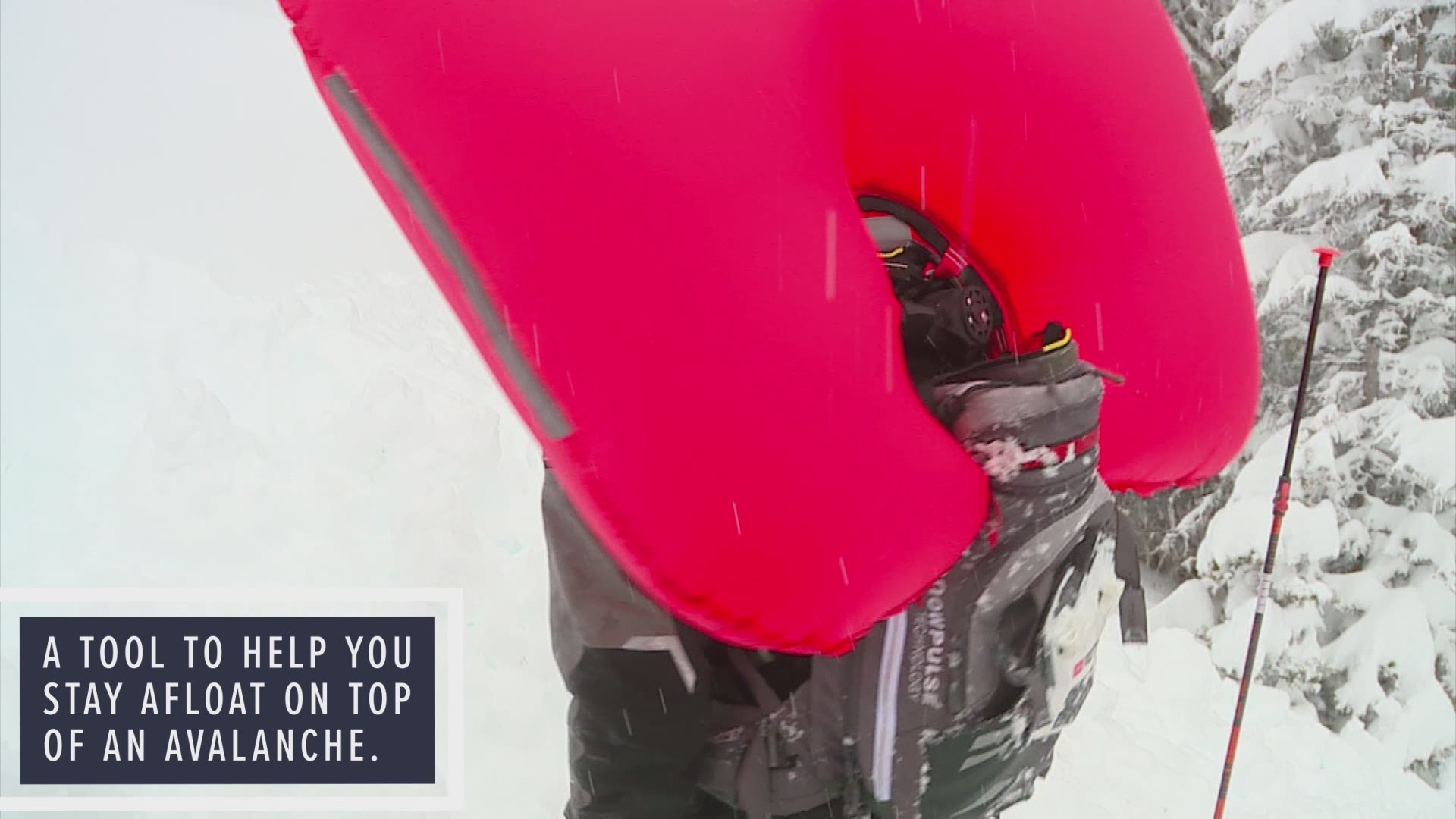BOISE, Idaho — A trip into Idaho's backcountry during the winter can be an exhilarating experience - a chance to see some of the most beautiful wilderness in the nation.
No matter your mode of transportation - snowmobile, skis, snowshoes, or car - the possibilities are endless for winter excursions.
But things don't always go as planned. So what do you do when your fun day trip into the mountains suddenly goes sideways, and you find yourself injured, lost or stranded? Are you prepared for what could possibly be a days-long wait until you're rescued?
PLAN AHEAD
You can greatly increase your chances of survival before you even leave the house. A little preparation and planning will go a long way.
Ron Christensen with Idaho Mountain Search and Rescue says one of the most important things you can do to increase your chances of rescue is to tell someone - a family member or friend - where you're going (be as precise as possible) and when you plan to return.
"Let someone know what your route of travel is and when you expect to return, because in the event that something happens to you, somebody at home knows and they can alert the appropriate authorities," Christensen said.
At the very least, do a quick post about your plans on a social media site like Facebook or Twitter.
Good preparation includes being ready for the elements. Check local weather forecasts, then plan for the worst. Remember, Idaho's weather, especially in the mountains, can turn on a dime. Be sure to layer your clothing so you can adjust to the weather once you're there. Also bring extra socks, gloves and anything else that might get wet on the trip.
Christensen suggests that you avoid wearing clothing made of cotton: "Cotton will retain moisture, and it can literally freeze upon your body," he said. "You need to stay dry - it's very important." Instead, you'll want to wear wool or synthetic materials that wick moisture away from your body.
And finally, pack an emergency survival kit.
SURVIVAL GEAR
Whether you're planning to ski out of bounds at your local ski hill, take a cross-country ski tour, or take the snowmobile out for a spin, if you're planning a backcountry excursion, there are a few essential items you'll want to take with you. Bad weather, unexpected injuries and getting lost can quickly turn a fun day trip into a multi-day fight for survival. But by being prepared with the right gear, you'll greatly increase your chances of making it out alive.
The following list of gear is specific for backcountry survival in the winter. That said, many of the items are essential for summer adventures as well, such as backpacking or mountain climbing. Depending on the activity you're planning, you may need to trim down the items in your emergency kit to fit your needs and carrying capacity.
What to bring with you:
Water - Water is something you simply cannot live without. In fact, humans can only live for about three days without water, but they can go up to three weeks without food. You should always have a water bottle with you. The good news is that if you're stranded in the Idaho mountains during the winter, there will be plenty of snow to melt. If you're taking water from a stream, remember to purify it first. The most certain way to kill all the microorganisms that can make sick is to boil the water first. Pack a metal cup or pot to use for boiling. You can also use a portable water purification/filtration system or iodine tablets.
Food - Be sure to bring enough food for however long you're going to be out, and then some. Include non-perishable, easy-to-open, ready-to-eat snacks like protein bars or granola bars. Always bring more than you think you'll need.
"Bring food that you're gonna like to eat," Christensen said. "If you have some type of energy bar and you have no interest in eating it, well then bring something else."
First-aid kit - A basic first-aid kit is a must for dealing with minor injuries such as scrapes or cuts. You may also want to include several other items like sunscreen, lip balm, blister protection and tweezers.
Shelter - Like a lot of the items you'll add to your survival kit, shelter options are many. While you might choose to purchase a waterproof tent or a bivy sack, it's not always feasible due to space or money constraints. A far cheaper option is to get a 10-foot by 10-foot plastic sheet or tarp at the hardware store. Also include 50 feet of parachute cord and a knife.
"In some cases, if you're just going out for a day hike it could be as simple as just bringing a large trash bag," Christensen said. "Something that you could cut a hole for your head and then you're gonna protect your body from the elements if you should be out in some inclement weather."
Shovel - One constant in Idaho's mountains during the winter: Snow, and lots of it. A compact, collapsible, metal shovel could be a life-saver in the event of an avalanche or if you need to construct a shelter. Many survival shovels come with added perks like sharp, serrated edges that can double as an ax or knife.
Fire-starting kit - A simple, but reliable fire-starting kit should include fire-starters like strike-anywhere matches, lighters, or flint and steel. Christensen warns that lighter fluids can gel in very cold conditions, making them less reliable, so should have a backup firestarter. And because natural tinder you find in the woods is likely to be cold and wet during the winter, you'll want to bring along your own. Dryer lint makes good tinder, as do cotton balls covered in Vaseline.
Communication device - Cell phone coverage is spotty at best in the Idaho backcountry. However, authorities may be able to ping your phone to find your location if you get lost. It's recommended that you charge your phone before you set off into the backcountry. Turn it off to conserve battery, and only turn it back on if an emergency occurs.
GPS receiver - In addition to your cell phone, consider investing in a GPS receiver that can give you vital information about where you are and where you've been.
Map & Compass - Even if you have a GPS receiver, you'll still want to bring along a compass and a topographical map of the area you'll be visiting. Technology can fail, so it's always good to have an analog backup. If you've never used a topographical map or compass before, REI has a couple handy how-to guides to get you up to speed:
Flashlight/headlamp - A flashlight or headlamp will come in handy if you find yourself unexpectedly spending the night in the backcountry. In addition to the obvious benefits of helping you see what you're doing in the dark, a flashlight can also be used as a signal device to alert searchers. Consider purchasing a flashlight that doesn't require batteries. There are a variety of options available when it comes to battery-less flashlights, including crank- and shake-chargers.
Signal - In addition to a flashlight, it's a good idea to have several other signaling devices in your pack, including a whistle, a signal mirror, and glow sticks. Anything that stands out against the backdrop of the wilderness will increase your chances of being spotted by search and rescue personnel. Bright-colored clothing (think hunter orange) will help too.
Additional Emergency Supplies:
- Prescription medications
- Non-prescription medications such as pain relievers/anti-inflammatory (Ibuprofen)
- Sun protection, including sunscreen, sunglasses, and lip balm
- Duct tape is always useful, especially if you find yourself having to construct a makeshift shelter or need to patch clothing.
- Hand warmers could come in, well, handy
- Avalanche beacons are a must-have if you're planning on going backcountry skiing, snowshoeing or snowmobiling in avalanche-prone areas. Also known as avalanche transceivers, these devices emit a pulsed radio signal. If one gets buried in an avalanche, other transceivers carried by the party pick up the signal being emitted from under the snow. The receiving transceivers interpret the signal into a visual and audible display that assists the search. Good transceivers can cost upwards of a few hundred dollars, but they are worth it if you're planning to venture into areas where avalanches are known to occur. Christensen highly recommends making sure your group's beacons are synced and communicating with each other before you set out.
WATCH: See how an avalanche airbag works
If you find yourself lost or stranded in the backcountry:
Don't panic.
If you get lost, your life could very well depend on whether or not you keep your wits about you. Having the proper emergency gear won't help much if you panic and make bad decisions.
"Don't panic," Christensen said "You gotta be smart. We always talk about [the brain] is actually the most important tool we take into the backcountry."
The Rule of 3
You can live for three weeks without food, three days without water, and three hours outside in extreme conditions without shelter. But you won't last three seconds if you panic and make poor decisions.
"If you've at least prepared and have the right equipment, those first three seconds, are gonna give you the confidence to make the right decisions as you start facing your situation," Christensen said.
We take a look at what it takes to survive an avalanche on Sunday with the kickoff of our backcountry survival series on the KTVB Channel 7 news at 10 p.m.



